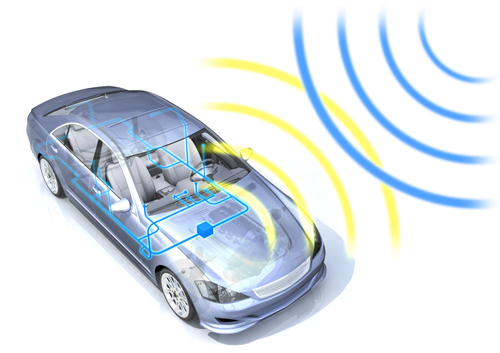There’s actually a specific name to describe the computer and electronic technology involved in our cars – it is called telematics. Actually, telematics is a general term that refers to any device which merges telecommunications and infomatics. The vehicle telematics business has been changing very rapidly over the past few years, with advances in cell phones, the Internet and GPS receivers, but there are a few sections we can look at to understand the increased demand for in-car electronics.
Telematics enables wireless data communication and opens up a huge range of possibilities. It can enable you to have wireless television and internet on your vehicle. Telematics is essentially a range of different features, options and devices that are brought together by a single principle – data and communication.
Through telematics you enjoy many benefits in your vehicle on a daily basis such as roadside assistance and remote unlocking of your vehicle. Let’s say you forgot the car keys in the vehicle, well with telematics and a quick phone call you could get your car unlocked.
Telematics is also used heavily in fleet tracking and management. More and more fleet owners are finding huge savings by adopting telematics technology.
Satellite navigation
How did some of us get around before GPS? For those of us with a terrible sense of direction, GPS receivers are great tools — they use radio signals transmitted from satellites to send detailed maps, specific directions and important locations like gas stations and restaurants to a tiny box mounted on the dashboard. Most GPS receivers are battery powered and can be integrated into your car’s audio and power systems, and their assistance have made them increasingly popular for car owners.
Mobile data
Constantly checking e-mail on BlackBerry devices is considered pretty standard by now, as many busy workers suffer from what’s known as “ringxiety,”- but what if wireless technology could be integrated straight into your car? Cell phones and hands-off sets are becoming a big part of in-car electronics — the new Land Rover LRX, for instance, has an iPhone dock that lets you control many of the vehicle’s functions from the phone itself — and some companies are producing crosses between a laptop and a GPS for more wireless connectivity. Many of these systems plan to use WiMax, the new cellular Internet based in large cities, so people can check e-mail and get directions while they sit in traffic on their way to work.
Vehicle tracking and trailer tracking
This kind of technology, unless you’re a spy, is mostly used by transportation and delivery businesses that send out large fleets of vehicles and products. Delivery trucks, taxi companies and repair and maintenance companies all can use sophisticated electronics to track workers and plan out important and sometimes complicated routes. These devices can increase efficiency and cut down on losses caused by human error, so more companies will most likely be willing to spend a little extra on a decent tracking system for security.
The business of vehicle telematics and other in-car electronic systems is getting the best of both worlds — businesses are willing to spend on advanced products for better efficiency, and consumers are looking for the easiest way to integrate all their gadgets. For lots more information on cars, electronics and in-car electronics, see the next page.
Where is it installed?
Telematics devices, such as Allstate’s Drivewise?, are usually small enough to fit in the palm of your hand, and installation is fairly straightforward. In most cases, you plug the device into your vehicle’s onboard diagnostic port (OBD-II port), which is usually located near the steering column, under your dashboard. Vehicles produced since the mid-1990s typically have this port and can be fitted with a telematics device.
How does it work?
After you’ve hooked up a telematics device, it will start recording information about your driving behavior, which it usually sends to your insurance provider over wireless phone networks. As you drive, the device records the data, which can help lead to savings if you’re a safe driver.
What are the benefits?
Telematics devices can help your insurance company reward you for being a safe driver. Installing a telematics device in your car, truck or SUV can help you qualify for car insurance discounts, which will help you keep some hard-earned cash in your pocket. Safe drivers avoid driving habits such as hard stops, traveling late at night—which can be more dangerous than daylight driving—and moving at high speeds. Drivers who put fewer miles on their vehicles per day may also qualify for discounts.
An additional perk of adding a telematics device to your vehicle is that it might make you more cognizant of your driving behavior. Many insurers’ programs allow you to go online to track the data your telematics device collects about your driving habits, which can help you learn what you need to do to become a better driver.
Better driving habits can lead to even more benefits, in addition to increased safety behind the wheel. If you adjust your driving behaviors so that you avoid quick bursts of acceleration and hard stops, for example, you may also get better fuel economy, which could work out to a few extra miles between fill-ups.
We’d all like to lower our monthly expenses, and if you have safe driving habits, a telematics device may be one way to help you earn savings—and become a better driver.

What does vehicle telematics mean to car people?
by
Tags:
